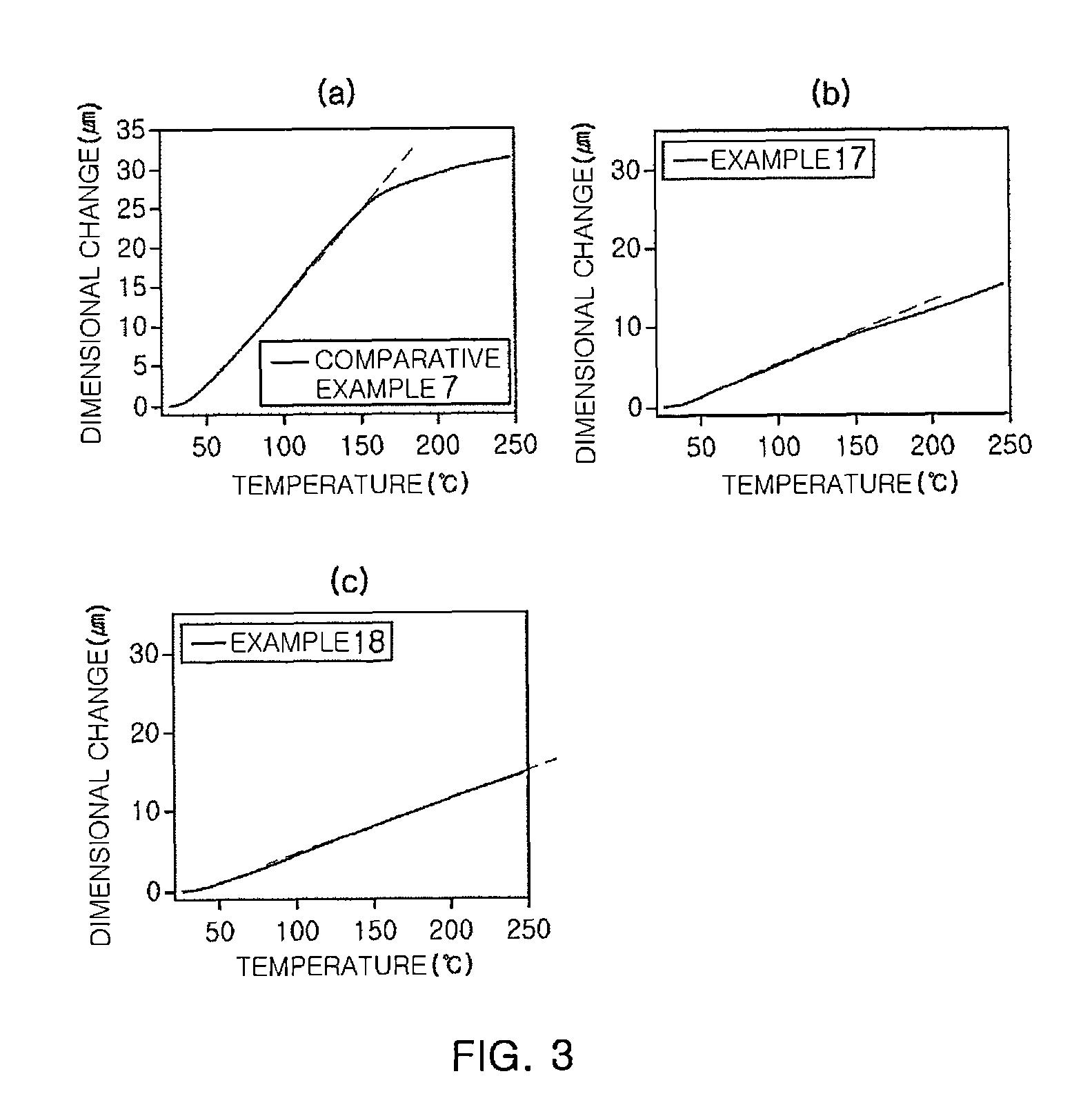Epoxy compound having alkoxysilyl group, method of preparing the same, composition and cured product comprising the same, and uses thereof
a technology of alkoxysilyl group and compound, which is applied in the field of epoxy compound, can solve the problems of product defects, warpage of substrates, and remarkably limited performance and processing of polymer materials, and achieve the effects of improving heat resistance properties, increasing chemical bonding efficiency, and improving chemical bonding efficiency
- Summary
- Abstract
- Description
- Claims
- Application Information
AI Technical Summary
Benefits of technology
Problems solved by technology
Method used
Image
Examples
synthetic example ai-1
Synthesis of Mono-Alkoxysilylated Epoxy Compound Using Dihydroxynaphthalene
(1) 1st step: Synthesis of 5-(allyloxy)naphthalene-1-ol
[0380]Into a 1,000 ml two-necked flask equipped with a refluxing condenser, 20.0 g of 1,5-dihydroxynaphthalene (Sigma-Aldrich), 51.81 g of K2CO3, and 500 ml of acetone were charged and mixed at room temperature. Then, the reaction temperature was set to 80° C., and homogeneous mixture was refluxed (hereinafter, the temperature written during the synthesis represents the set temperature of the refluxing apparatus and was higher than about 10° C. to 15° C. than true reaction temperature of reaction medium). During the refluxing, 13.5 ml of allyl bromide (Sigma-Aldrich) was added in a dropwise manner and allowed to react overnight. After finishing the reaction, the reaction mixture was cooled to room temperature and was filtered using Celite. The solvent was evaporated to obtain a coarse product. A reaction product was extracted from the coarse product using...
synthetic example ai-2
Synthesis of Di-Alkoxysilylated Epoxy Compound Using Dihydroxynaphthalene
(1) 1st step: Synthesis of 1,5-bis(allyloxy)naphthalene
[0392]Into a 1,000 ml two-necked flask equipped with a refluxing condenser, 20.0 g of 1,5-dihydroxynaphthalene (Sigma-Aldrich), 27.0 ml of allyl bromide (Sigma-Aldrich), 103.61 g of K2CO3, and 500 ml of acetone were charged and mixed at room temperature. Then, the reaction temperature was set to 80° C., and the homogeneous mixture thus obtained was refluxed overnight. After finishing the reaction, the reaction mixture was cooled to room temperature and was filtered using Celite. The solvent was evaporated to obtain a coarse product. A target product was extracted from the coarse product using ethyl acetate, washed three times using water, and dried using MgSO4. MgSO4 was filtered off, and solvents were removed by using an evaporator to obtain an intermediate product (11), 1,5-bis(allyloxy)naphthalene. The reaction scheme of the 1st step and the NMR data of ...
example ai-3
Prediction Example AI-3
Synthesis of Tri-Alkoxysilylated Epoxy Compound Using Dihydroxynaphthalene
(1) 1st step: Synthesis of 2,6-bis(allyloxy)naphthalene
[0404]Into a 1,000 ml two-necked flask equipped with a refluxing condenser, 20.0 g of 2,6-dihydroxynaphthalene (Sigma-Aldrich), 27.0 ml of allyl bromide (Sigma-Aldrich), 103.61 g of K2CO3, and 500 ml of acetone were charged and mixed at room temperature. Then, the reaction temperature was set to 80° C., and the homogeneous mixture thus obtained was refluxed overnight. After finishing the reaction, the reaction mixture was cooled to room temperature and filtered using Celite. The solvent was evaporated to obtain a coarse product. A target product was extracted from the coarse product using ethyl acetate, washed three times using water, and dried using MgSO4. MgSO4 was filtered off, and solvents were removed by using an evaporator to obtain an intermediate product (11), 2,6-bis(allyloxy)naphthalene. The reaction scheme in the 1st step ...
PUM
| Property | Measurement | Unit |
|---|---|---|
| glass transition temperature | aaaaa | aaaaa |
| temperature | aaaaa | aaaaa |
| temperature | aaaaa | aaaaa |
Abstract
Description
Claims
Application Information
 Login to View More
Login to View More - R&D
- Intellectual Property
- Life Sciences
- Materials
- Tech Scout
- Unparalleled Data Quality
- Higher Quality Content
- 60% Fewer Hallucinations
Browse by: Latest US Patents, China's latest patents, Technical Efficacy Thesaurus, Application Domain, Technology Topic, Popular Technical Reports.
© 2025 PatSnap. All rights reserved.Legal|Privacy policy|Modern Slavery Act Transparency Statement|Sitemap|About US| Contact US: help@patsnap.com



